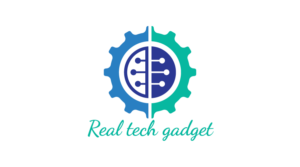Customer retention is more crucial than ever in 2025. As markets grow more competitive and acquisition costs continue to climb, businesses must focus on building lasting relationships with their existing customers. One of the most powerful tools available for this task today is the WhatsApp Business API, especially when paired with intelligent automation strategies.
With over two billion active users globally, WhatsApp has evolved from a simple messaging app into a dynamic business communication platform. Through the WhatsApp Business API, brands can now engage with customers directly, personally, and efficiently at scale. Here’s how to leverage this tool to improve customer retention in 2025.
Why WhatsApp for Customer Retention?
Customers expect more than good products—they want timely support, personalized engagement, and meaningful interactions. WhatsApp excels at meeting these expectations because:
- It’s where your customers already are
- Messages have high open rates (often exceeding 90%)
- It enables two-way, real-time communication
- It supports rich media, interactive elements, and chat automation
These advantages make WhatsApp an ideal channel to keep your customers engaged, supported, and loyal.
Step 1: Understand the WhatsApp Business API
The WhatsApp Business API is different from the free WhatsApp Business App. Designed for medium to large businesses, the API allows for large-scale, automated, and secure messaging through official service providers (BSPs).
Through the API, you can:
- Send proactive messages like order confirmations, shipping updates, or appointment reminders
- Use marketing automation to trigger messages based on customer actions or timelines
- Set up interactive message templates with buttons and quick replies
- Enable customer support with human or AI chat agents
Step 2: Implement Automation for Proactive Engagement
Automation is key to maximizing retention through the WhatsApp Business API. With automated workflows, you can:
1. Onboard New Customers
First impressions matter. Set up an automated welcome message series to introduce your brand, share helpful resources, and guide users through your product or service.
Example:
- Day 1: Welcome message + link to getting started guide
- Day 3: Share tips on how to make the most of your product
- Day 7: Ask for feedback and offer support
2. Re-Engage Inactive Users
Automate messages to bring back customers who haven’t interacted in a while.
Example:
- “Hi [Name], we miss you! Here’s 10% off your next order.”
3. Send Personalized Offers
Segment your customers based on past behavior and automate personalized offers or product suggestions.
Example:
- “Hi Alex, since you loved our running shoes, we thought you’d like our new activewear collection.”
4. Automate Post-Purchase Communication
Send automated follow-ups after purchases to thank customers, offer tips, or upsell complementary products.
Example:
- “Thanks for your order! Need help setting it up? Watch this short video.”
Step 3: Use Templates and Interactive Messaging
WhatsApp Business API requires approved message templates for proactive outreach. Design these templates with retention in mind:
- Feedback Requests: “How was your experience? Rate us now.”
- Refill Reminders: “Time to reorder your supplements? Tap below to place an order.”
- Loyalty Updates: “You’ve earned 200 points! Redeem them now.”
Interactive messages allow you to:
- Add CTA buttons like “Track Order,” “Book Again,” or “Get Support”
- Include quick replies for feedback or menu navigation
These messages keep customers engaged and make it easy for them to take action without leaving the chat.
Step 4: Combine WhatsApp with CRM and Analytics
Integrate your WhatsApp Business API with your CRM to:
- Track customer interactions across channels
- Trigger automated messages based on CRM data
- Monitor customer satisfaction and loyalty metrics
With analytics, you can:
- Measure retention rates and engagement levels
- A/B test message templates
- Optimize timing and content of automated workflows
Step 5: Offer Real-Time Customer Support
Customer service plays a major role in retention. Use the WhatsApp API to:
- Route support inquiries to human agents or AI whatsapp chatbot
- Send automated status updates during support tickets
- Follow up with satisfaction surveys after a support session
Quick, helpful responses through WhatsApp can turn frustrating issues into loyalty-building moments.
Step 6: Build Loyalty Programs and Exclusive Communities
Engage your most valuable customers by:
- Sending early access or VIP offers via automated messages
- Creating exclusive WhatsApp groups or channels for loyal customers
- Sharing content like tutorials, sneak peeks, or events
With automation, these experiences scale without extra effort, ensuring consistent communication with your top users.
Real-Life Success Story: D2C Skincare Brand
A direct-to-consumer skincare company integrated the WhatsApp Business API into its post-purchase strategy. Using automation, they sent:
- Skincare tips based on purchase history
- Refill reminders every 30 days
- Monthly personalized product recommendations
Within 6 months, their customer retention rate increased by 40%, and WhatsApp became their highest-performing channel for reorders.
Best Practices for Retention with WhatsApp Business API
- Respect opt-in rules: Only message users who have agreed to receive messages.
- Keep messages relevant and timely: Avoid sending generic or spammy content.
- Maintain human touch: Blend automation with real human support when needed.
- Test and refine: Use data to improve messaging strategies continually.
The Future of Retention in 2025 and Beyond
As WhatsApp continues to evolve with richer features like video messages, voice notes, and payment integration, its role in customer retention will only grow. Brands that embrace automation and personalize their WhatsApp communication will build stronger relationships, drive higher lifetime value, and stay ahead of the competition.
In 2025, retaining customers isn’t just a matter of sending occasional emails or newsletters—it’s about creating consistent, personalized, and real-time communication. The WhatsApp Business API, powered by smart automation, offers the perfect platform for doing just that.

